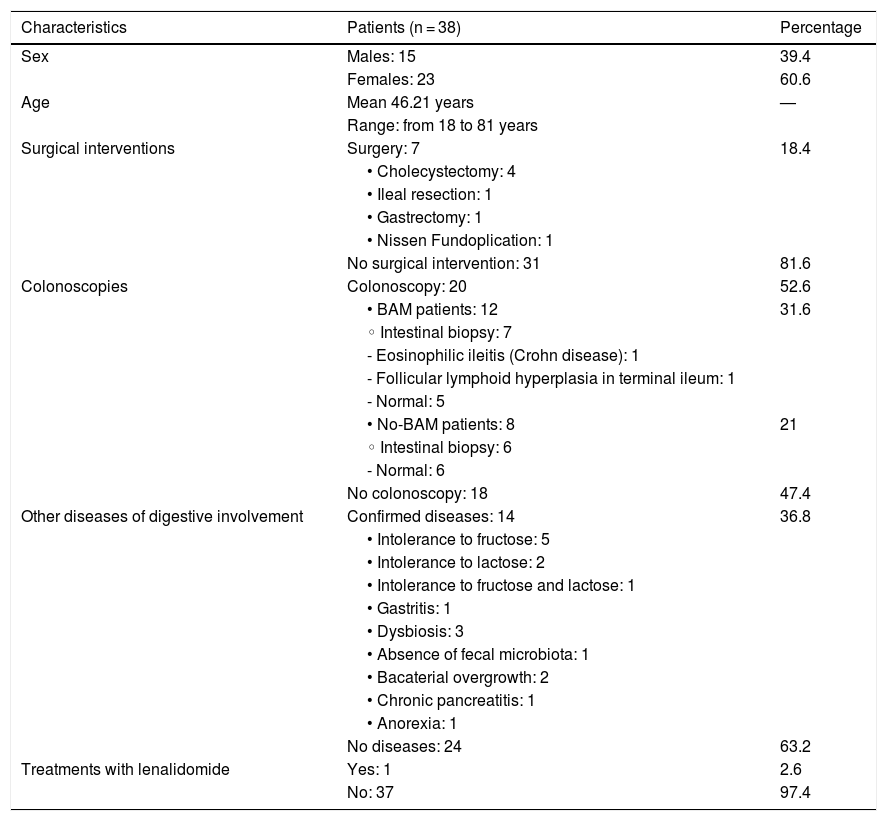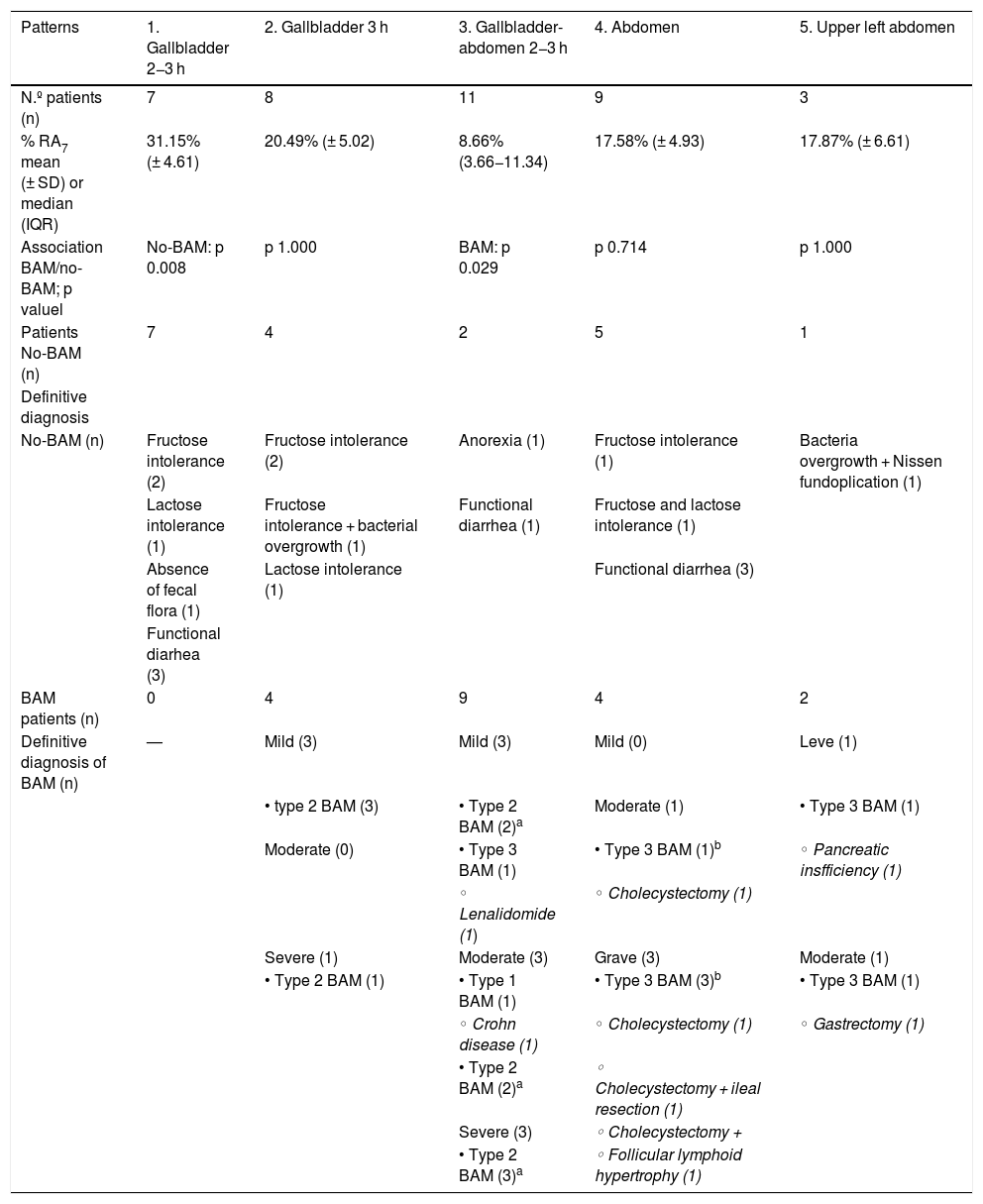To evaluate the enterohepatic circulation of 75-Selenium turoselecolic acid (75Se-SeHCAT) during the first 3 h and its correlation with the abdominal retention at the 7th day (AR7), as contribution to the clinical study of biliar acid malabsorption (BAM).
Materials and methods38 patients with chronic diarrhea were retrospectively studied. Acquisition protocol included static abdominal images at 1st, 2nd and 3rd hour and the 7th day after oral administration of the radiopharmaceutical. Images of 1–3 h determined 5 patterns of enterohepatic circulation that, due to their location, were characterized as: 1) gallbladder 2−3 h, 2) gallbladder 3 h, 3) gallbladder-abdomen 2−3 h, 4) abdomen, 5) upper left abdomen. The association of these patterns with the AR7 (Fisher, STATA) were investigated. Patients were classified as Non BAM (AR7 > 15%), mild-BAM (AR7 15−10%), moderate-BAM (AR7 10−5%) or severe-BAM (AR7 < 5%).
Results19 patients had an AR7 diagnostic of BAM (7 mild-BAM, 5 moderate-BAM, 7 severe-BAM). The pattern “gallbladder at 2−3 h” was statistically associated with Non BAM (p 0,008), while “gallbladder-abdomen at 2−3 h” was correlated with having BAM (p 0,029).
ConclusionVariations detected at the abdominal level in images during the first 3 h were associated with changes in intestinal absorption and the incorporation of the radiopharmaceutical into the pool of bile acids, so visual interpretation of the images at 2nd and 3rd hour could be useful in the final assessment of the study.
Evaluar la circulación enterohepática del ácido tauroselcólico marcado con 75-Selenio (75SeHCAT) durante las 3 primeras horas y su correlación con la retención abdominal al 7º día (RA7), como aportación al estudio clínico de malabsorción de ácidos biliares (MAB).
Material y metodosSe estudiaron de forma retrospectiva 38 pacientes con diarrea crónica. El protocolo de adquisición incluyó imágenes estáticas abdominales a la 1ª, 2ª y 3ª hora y al 7º día tras la administración oral del radiofármaco. Las imágenes de 1 a 3 horas determinaron 5 patrones de circulación enterohepática que por su localización se caracterizaron como: 1) vesícula biliar 2−3 horas, 2) vesícula biliar 3 horas, 3) vesícula biliar-abdomen 2−3 horas, 4) abdomen y 5) abdomen superior izquierdo. Se investigó la asociación de estos patrones con la RA7 (Fisher-STATA). Los pacientes se clasificaron como No MAB (RA7 > 15%), MAB-leve (RA7 15−10%), MAB-moderado (RA7 10−5%) o MAB-grave (RA7 < 5%).
Resultados19 pacientes presentaron una RA7 diagnóstica de MAB (7-leve, 5-moderada, 7-grave). El patrón “vesícula biliar a las 2−3 horas” se asoció estadísticamente con la No MAB (p 0,008), mientras que el de “vesícula biliar-abdomen a las 2-3 horas” se correlacionó con padecer MAB (p 0,029).
ConclusionesLas variaciones detectadas a nivel abdominal en las imágenes durante las 3 primeras horas están asociadas a los cambios de absorción intestinal e incorporación del radiofármaco al pool de los ácidos biliares, por lo que la interpretación visual de las imágenes a la 2ª y 3ª hora podría tener utilidad en la valoración final del estudio.
Article
If you experience access problems, you can contact the SEMNIM Technical Secretariat by email at secretaria.tecnica@semnim.es or by phone at +34 619 594 780.

Revista Española de Medicina Nuclear e Imagen Molecular (English Edition)












